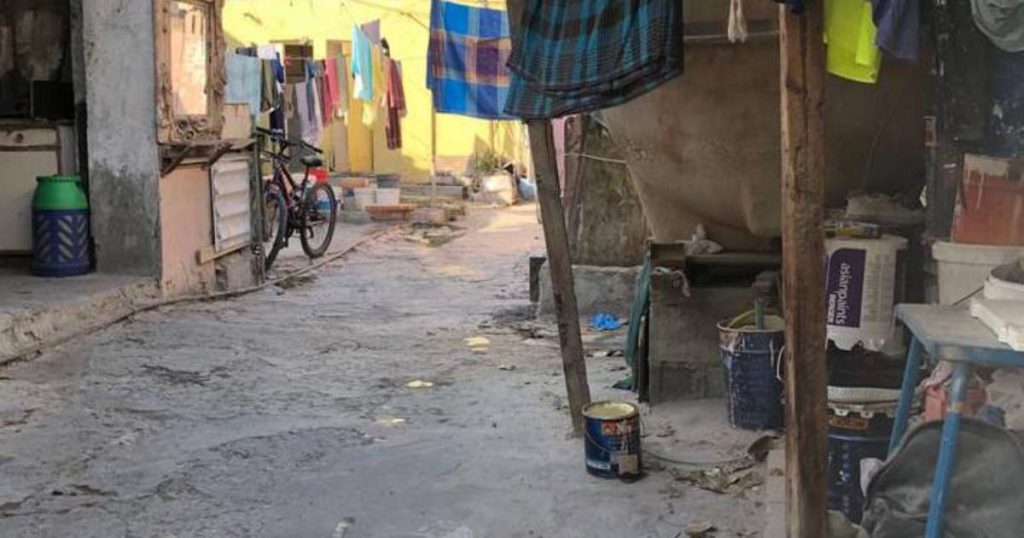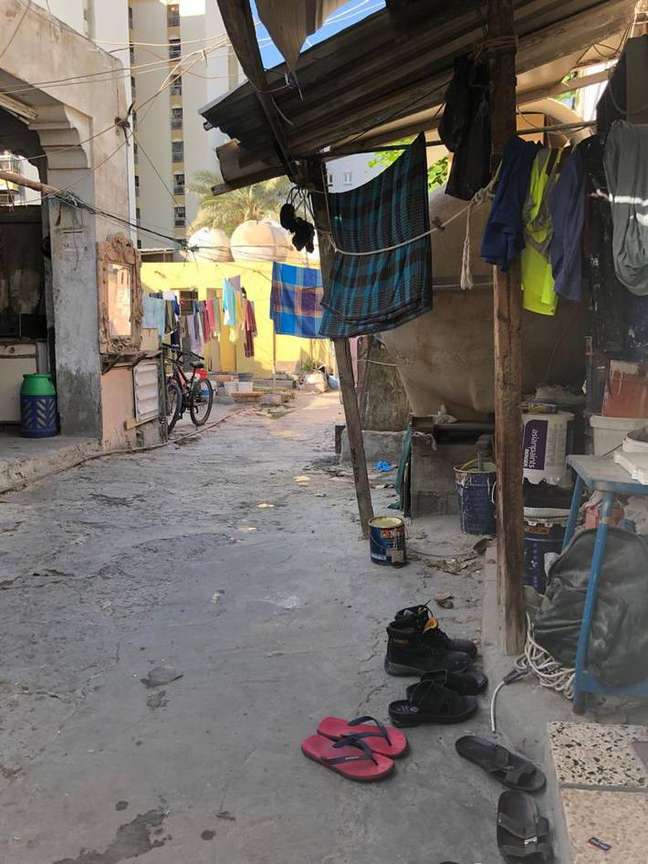In Qatar, luxury consumer malls blend with popular homes. While Arab women shop for designer goods, factory workers struggle to make ends meet
2 ten
2022
– 05:10
(updated at 08:48)
a QatarLike any other place, it has many faces in its society and its complexities. There is the technological aspect, as the skyscrapers of Doha and Lusail shine with the creativity of their architecture and the play of lights. There is luxury consumption, in the many malls dotted around the country world Cup And where it is possible to reach the stores of international brands and exclusive products. In one of them, Villaggio, Venice is reproduced. There is even a canal in which gondolas sail. This year, the Place Vendôme is inaugurated, a shopping center whose structure pays homage to Paris.
And there is the other side of the coin, such as the harsh conditions many migrant workers face in order to survive in the country with the highest per capita income in the world and an estimated wealth of US$180 billion. The minimum wage in Qatar, after the labor reform in 2016, became 1,000 riyals (1,490 Brazilian reals).
Behind the Qatar National Museum, whose building mimics a desert rose and overlooks the Gulf Sea, Al Fotan Street reveals another country far less touristy. Made up of Napata houses with white walls and blue doors, the street is one of the rare places in Doha that has not been destroyed by modernity. There was an old workers’ quarter while the country was developing in the 20th century. There is even signage stating that it is a listed area, under restoration and that you cannot enter homes because of this. However, upon opening the wooden doors, what is revealed are not works but residences with workers from Asia living in unsanitary conditions.
The floor is made of hammered earth, the laundry is improvised, and the men, who have come from places like Nepal, India and Bangladesh, are crammed into dwellings of a few square metres. 30 degrees a day mixed with the strong smells you could feel on the street, including leftovers stored in bags behind a door. Some workers let Estadão in to speak and show the conditions they live in, but ask not to take pictures or write their names in the article, because they fear problems with their employers and the Qatari government.
Everyone immigrated with the idea of saving money in Qatar to one day return to the countries where they were born. The challenge is that you live as an employee in a country with a high standard of living and still need to send money back home. Behind the Al-Fattam area, there is an area called Old Doha, where there are groups of low-income buildings, very similar to those built in the Singapore project, in São Paulo, which contrast with the skyscrapers that constantly rise along the waterfront and the center of Doha, in addition to the city Neighboring Lusail, which began to be inhabited recently and was planned to have a population of 250,000 with high purchasing power.
Different consumption and processing patterns
For those who have a Qatari father and were born in the country, the government offers benefits from the start of their citizens’ lives, such as setting up a savings account. Qataris enjoy free access to the best health and education services and do not pay taxes, unlike the 88% of foreigners who make up the country’s workforce, whether they are skilled workers or workers.
In trade, various Qataris are shown. And inside the malls frequented by elite women who follow Islam, there is a store wearing black abayas, the clothes they must wear when leaving the house or in the presence of men outside the family. Men wear the thawb or kandura, the white tunic that reaches down to the feet.
But beneath the traditional clothes, another world is revealed. Arabs love to consume and have designer clothes and things, such as handbags, eyeglasses, jewellery, watches, cell phones of the latest generation and technology. At Shopping Villagio, an Italian brand Prada handbag costs 5,000 reais (R$7,450.00), for example.
Indoors, women can dress and flaunt the best in their wardrobes, as well as at private parties just for them. Wearing luxury symbolizes prestige and the extent of the wealth and influence of the family of the Arab woman or man.
In immigrant markets, such as the one next to the tourist Souq Waqif, shops are devoted to popular products, many of which are fake, such as clothes, sports shoes, abayas, bed, table and bathroom items as well as electronics. The restaurants strive to cater to the tastes of Filipinos, Indians, and Africans who live here, such as Nigerians and Sudanese. Souks and butchers sell chicken meat, which is widely consumed in Qatar, as well as lamb chops, fruits and vegetables, and spices from Asia used as condiments to quench a little homesickness.
It’s a colorful sound, with loud music and heat, both human and temperature. Quite different from the silent, reserved and air-conditioned environment of the consumption centers frequented by the wealthy of Qatar in Doha, Lusail and Al-Rayyan.
🇧🇷The best content in your email for free. Choose your favorite Terra newsletter. click here!

“Music fanatic. Professional problem solver. Reader. Award-winning tv ninja.”







More Stories
Couple retakes glacier photo after 15 years, surprised by changes: ‘It made me cry’
Two killed in hotel collapse in Germany – DW – 07/08/2024
Lula speaks for half an hour on phone with Biden about Venezuela’s electoral impasse | Politics